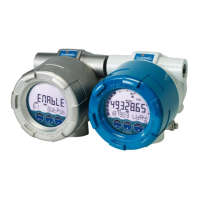AUTOMATIC UNIT CONVERSION E110-SERIES TUTORIAL
Page 4 FW_E110_AutoUnitConv_002_EN
1 Description of the automatic unit conversion
The automatic unit conversion is a feature that helps you to avoid the different K-Factor
calculations for the (accumulated) total and the flowrate. With the automatic unit conversion,
you only need the test/calibration certificate that came with your flowmeter. On this
certificate you will find the (average) K-Factor and the related measurement unit. To use the
automatic unit conversion, you only need to enter the (average) K-Factor and the related
measurement unit from the flowmeter certificate.
You need to preset the type of measurement unit: volume, mass or hand. Hand is selected
for measurement units which are not supported by the automatic unit conversion.
1.1 The relation between the K-Factor and the automatic unit conversion
The K-Factor is a figure that represents the amount of pulses which relates to the quantity
of a material that passes the flowmeter.
There are three different K-Factors:
one for the flowmeter (as given on the certificate);
one for reading of the (accumulated) total:
one for the reading of the flowrate.
When another measurement unit is selected for the (accumulated) total or the flowrate, the
automatic unit conversion uses the K-Factor of the flowmeter to, calculate the correct
reading for the (accumulated) total and the flowrate separately.
When the E-series already shows a (accumulated) total and the measurement
unit is changed, the present total is not recalculated into the new measurement
unit. Therefore the total needs to be cleared before you enter a new measurement
unit.
1.2 The relation between the K-Factor and the measurement unit set by hand
The K-Factor is a figure that represents the amount of pulses which relates to the quantity
of a material that passes the flowmeter.
There are three different K-Factors:
one for the flowmeter (as given on the certificate);
one for reading of the (accumulated) total:
one for the reading of the flowrate.
For the correct reading, you need to know the K-Factor of the flowmeter and the
measurement unit for which the flowmeter is calibrated.
Example
For this example:
the flowmeter has a K-Factor: 6624.605 and a measurement unit: m
3
.
the measurement unit for (accumulated) total is required per US GAL.
the unit conversion: 1 m
3
equals 264.17 US GAL (1 US GAL equals 0.00378 m
3
).
The flowmeter generates 6624.605 pulses per m
3
. The selected unit for (accumulated) total
is US GAL. For the calculation of the K-Factor for the (accumulated) total: the K-Factor
6624.605 with an unit m
3
converted into US GAL gives 6624.605 : 264.17 = 25.077.

